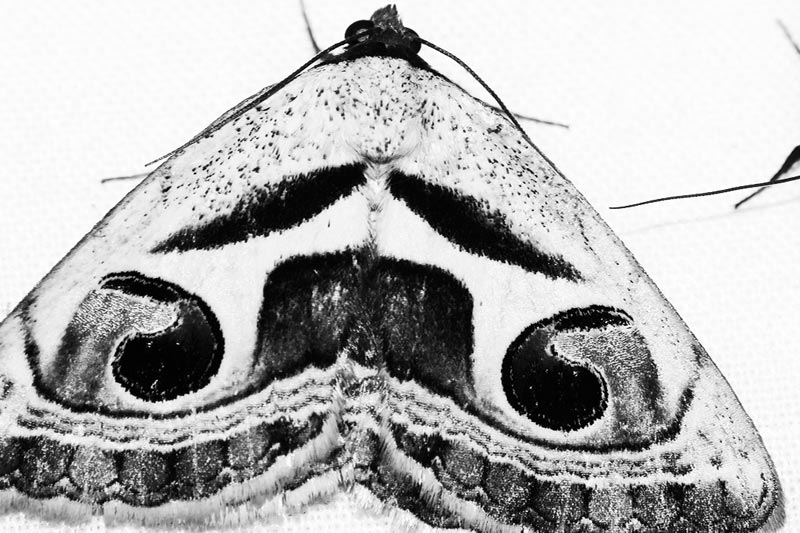I crumple on the exam table, feeling small and dusty like a battered moth. Eventually, the grease on my body began to congeal after days of not showering. Now I am coated.
When the doctor re-enters the room, I will myself to perk up, to appear a less wilted. I may be here because I’m unwell, but I don’t have to look unwell, I tell myself.
I have my pride. Perhaps not full-fledged confidence, but pride, a pride that is as stubborn as I am.
“So,” the doctor says, as she looks me up and down.“Menstrual problems?”
She is a small, plump Salvadoran woman with freckles. So is my mother. They both have the same liquid brown eyes and thick, dark hair. My gaze rests on the doctor’s full lips as my hands fall to my stomach.
“Yeah,” I say. “My cramps are really bad.”
The doctor raises an eyebrow.
“How bad?”
I shrug and stutter,
“I-I d-don’t know. Bad?”
My voice rises when I wish it wouldn’t. Now my intonation has ruined everything.
I am the moth pinned to the board. Stuck.
Am I not already helpless enough, being a 19-year-old woman, an immigrant’s daughter in a land of Confederate generals’ descendants?
Then she asks the question I knew she would ask, the question she was responsible for asking, the question I dreaded.
“Well, what are you taking?”
My head is swirling, my stomach is swirling, my whole body is swirling, except for my abdomen, which is burning, and I just want to scream, but I am a moth and moths do not scream.
“Nothing.”
“Nothing?”
“Nothing.”
“No painkillers? Motrin? Midol? Aleve? A generic ibuprofen?”
I shake my head. My mind skips to the agonizing girl curled up in bed yesterday.
Then it flashes to my grandmother clinging to the sofa in San Salvador, taking another swig of Tíck Táck and popping another pill. She is as grubby as I am but older, drunker, sadder.
It has been almost a week since she left that sofa, almost a week since she was raped again. She took an icy shower to wash away the blood after the attack and has not showered since then. When she finally pulls herself off the sofa, my grandmother walks to the kitchen, downs 60 tablets of ibuprofen, drenches herself in kerosene and lights herself on fire.
My mother is the age I am now, and at work when it happens. She is always working, except for those five days, she takes off to sit at my grandmother’s side in the hospital.
On the fifth day, the Abuela I never had dies.
“No,” I mutter as I stare at the doctor’s right shoulder, afraid that if I meet her eyes, I will cry.
“I do not take painkillers.”
I do not tell her that my mother kept the ibuprofen locked up in our house. It was simpler not to take painkillers at all than to have to ask my mother permission. Even at college, my mother’s stern expression and questioning terrified me.
“You must take Motrin,” she says firmly. “It will make the suffering much easier.”
She is referring to a different kind of suffering than I feel in that moment, the physical manifestation of my womanhood, not the burden of my family history.
Suddenly I tense up the way I do when classmates offer me alcohol at parties. My muscles get so tight that it hurts, and I’m the moth willing itself to camouflage with the bark on the tree beneath its spindly legs. Yet I am not hiding. I am in plain sight of my doctor. I exhale and my muscles relax.
I meet her eyes and say much more calmly than I thought possible,
“Addiction runs in my family.”
The doctor’s face softens.
“I understand, but if you take the painkillers exactly as directed, you should be fine. You will not get addicted. Just follow the directions on the bottle.”
“What if I take more?”
“Don’t take more.”
“But what if I do?”
“You won’t,” she says. “It’s a huge help that you know your family history. You’re aware and you’ll be cautious. Take painkillers only as prescribed, and it will be all fine.”
Fine. All fine. The words ring and the scene of my grandmother on the sofa goes black.
The doctor pats my hand when I don’t respond.
“Right after this, I want you to go to the drugstore and buy a bottle of ibuprofen,” she says. “Come back next month if you still can’t manage the pain, but you must do this first.”
I nod.
“Promise?”
“Yes.”
“You’ll go the store, and you’ll take the pills, and you’ll be fine.”
The doctor’s voice is faint and echoing at this point.
“Fine.”
“Good. Now off you go.”
“Thank you.”
“Of course. Bye now.”
When I walk out of the exam room, I have the wings not of a month but a butterfly. And a couple of hours later, as I stand in the shower, I notice that the cramps have lessened.

“At least one kind of suffering has ended.”
Loved your story…so well told. ~D.